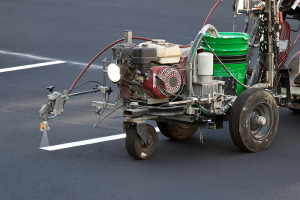Ideas for low- and no-cost health care energy-efficiency projects
Facility leaders are often faced with the tough task of trimming budgets. Reducing energy use can be a more efficient way to cut rather than reducing staff or delaying projects. A new toolkit provides information for facility managers who are looking to cut costs through energy efficiency, including several low-cost and no-cost projects.
The Energy to Care toolkit is an interactive PDF containing frequently asked questions about the free Energy to Care benchmarking and awards program, video tutorials on how to get the most out of energy dashboards, and step-by-step instructions on dozens of efficiency projects. The toolkit is available at www.energytocare.com — look for the orange button on the right side to download it.
The toolkit provides answers to several common questions about benchmarking energy use through the program. For example, facility managers without the financial support or staff to conduct major energy-efficiency projects often wonder how to get started. The toolkit explains how hospitals can partner with energy services companies to overcome capital constraints. The toolkit also recommends starting with small projects that require little to no investment. By tracking and demonstrating the success of these projects to senior leadership, more capital may be granted for future projects.
Video tutorials. The Energy to Care toolkit includes tutorial videos that can help Energy to Care participants make the most of the Energy to Care monitoring and reporting dashboard. Video topics include buildings and meters, working with dashboards, ENERGY STAR applications, energy-use intensity and user management.
Performance improvement measures. The toolkit includes instructions and case studies on many projects — called performance improvement measures, or PIMs — that can help health care facilities improve efficiency. Several projects require only time, including:
- Developing an energy-management program;
- Benchmarking inpatient and outpatient facilities;
- Running daily reports of overridden control points in building control systems;
- Evaluating lighting and HVAC systems that can be shut down during off-peak hours.
The toolkit also contains many low-cost measures and ranks them to show whether they have low, medium or high savings potential. These projects include: steam trap repair and replacement; chilled water supply temperature reset; operating room unoccupied setbacks; energy-efficient lighting; economizer damper operation; and maintenance. Download the toolkit and explore projects that will work for your facilities.
Deanna Martin is the membership and communications director at the American Society for Healthcare Engineering.
ASHE INSIGHTS
Important monographs available from ASHE
Following are two recently released monographs that can be accessed by ASHE members as free PDFs at the resource library.
- Promoting the Value of The Facility Department to the C-Suite. This monograph gives strategies and real-world examples of facility professionals who have successfully shown the value of their departments to organizational leaders.
- Risk Assessment of Medical Equipment. A key part of the Joint Commission’s environment of care management plans, risk assessments of medical equipment are covered in this new ASHE monograph. It presents a framework for facilities professionals to follow.
Design guidelines available to industry through ASHE
The 2014 editions of the Facility Guidelines Institute’s Guidelines for Design and Construction of Hospitals and Outpatient Facilities and the Guidelines for Design and Construction of Residential Health, Care, and Support Facilities can be purchased at www.ASHEstore.com.




